“The tongue that belongs to a fake friend is sharper than a knife.” -Argentinian proverb
Other Pandemic National Case Studies can be found here.
Argentina is the second most populous nation in South America, and second largest also in area. The self-proclaimed crisol de razas (crucible of races) became a popular destination for Christian immigrants from not only Europe, but from the late nineteenth century onward, many nations of Asia. After World War 2, Argentinian leader Juan Peron even opened the nation to fleeing Nazis.
While Catholicism is practiced by the nation’s majority, Argentina provides a broad freedom of religion, with a cultural disposition toward Orthodox Footballism. Since the Falklands War, Argentina’s expenditures on its military have shrunk dramatically, which may be one reason why Argentina’s economy remains one of the world’s 20 largest, despite the generally steep currency inflation that goes hand-in-hand with exceptional levels of government spending.
Argentina’s Experience With Pandemic Medicine
Argentina was not one of the nations that embraced early treatment medication. While there were early reports of some Argentinians using hydroxychloroquine (HCQ), Argentinian Public Health officials eventually came out against recommending HCQ after statements on June 5, 2020 saying that HCQ wasn’t working on late stage patients as monotherapy in ridiculous doses. Officials also recommended against the use of other immunomodulators, the more commonly used protease inhibitors, ACE inhibitors, and prophylaxis of any kind.
With the exception of participation by a small number of patients in sketchy WHO trials, Argentina was not even bothering to run many medical trials. As such, Argentina stands out as one of the true examples of medical nihilism during the pandemic, contrasting greatly with the philosophical approach of neighboring Uruguay. Let us examine the results.
As the pandemic began to spiral out of control for Argentina, a few regions of Argentina chose to give ivermectin (IVM) a try. Data from the Argentinian Ministry of Health suggests IVM adoption was associated with bending COVID-19 mortality curves.
By mid-2021, those regions using IVM entirely toward the bottom of cumulative COVID mortality comparisons.
The result was due both to fewer cases, and also to a lowered case fatality rate (CFR).
Nevertheless, the central government marched onward into the experimental vaccine era without encouraging IVM nationally.
Argentina’s Experimental Mass Vaccination/Transfection Program
Argentina kicked off its “Let’s see what these potluck vials do by injecting people” program on December 29, 2020 using AstraZeneca, later mixing things up with some Sputnik V (which it produced locally), Pfizer doses, and finally Moderna. Late in 2021, Argentina was chosen as a manufacturing hub for mRNA vaccines in South America. The Argentinian vaccination program has been a little heavier than most in South America.
While you might think that the natural thing to do in South America would be to administer most vaccine doses long before the start of the Winter months, Argentina and most other South Americans strangely stretched their program through the Winter as cases and deaths piled up. It’s funny how worldwide availability of doses so often corresponds to vaccinating into the Winter respiratory illness peak.
When mid-Winter cases of myocarditis began to surface among athletes in particular, they were promptly blamed on COVID, with no discussion of the association with the mass vaccination campaign, despite the CDC’s having admitted the connection a few days prior.
While that wave of SARS-CoV-2 spread was the largest experienced in Argentina to that point in time, the following Summer wave would be paradoxically even larger.
Argentina entered 2021 with around the same COVID-19 mortality rate per capita as the larger South American continent, despite vaccinating more than all but one or two South American nations (depending on which metric you go by). Argentina’s COVID-19 mortality rate is still near parity with South America’s, and the gap with respect to the rest of the world has only grown.
For Argentina, whose central government discouraged the use of medicine to treat COVID-19 early (with pockets of ivermectin usage starting late in 2020), and one of the world’s largest vaccination campaigns (13th) measured in doses per capita, the result is the 25th highest per capita COVID mortality rate in the world—13th if we weed out the small nations with populations under 5 million.
It is worth noting that a spate of deaths of newborns has caught the attention of Argentine authorities. We will have to wait and see if government prosecutors stay the course in looking for somebody to blame at the hospital rather than re-evaluating vaccine safety and efficacy data.
The Aftermath
During 2022, world economic problems are hitting Argentina hard. Inflation hit a 20-year high, tracking 71% over the past year. The government has cut subsidies and struggles to pay its foreign debts.
Despite a history of supporting central government driven socialist programs, crowds of anti-government protesters are swelling as officials say there is a need to stick to the system in which Argentines pay taxes that are passed on to the IMF, which previously gave money to the government. The conflict between the government and even its usually reliable socialist support could lead to the abandonment of the dollar for some sort of BRICS currency system currently being discussed primarily by China, and Russia, the latter of which has demonstrated the ability to maintain a commodity-backed currency.
In the midst of the chaos, It is yet to be seen whether the economic shock to Argentina will result in more deaths than COVID or the vaccines.




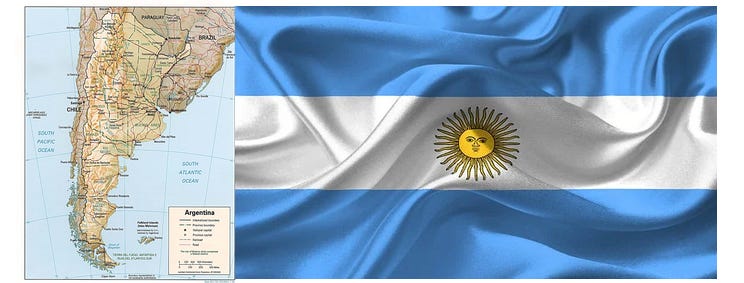

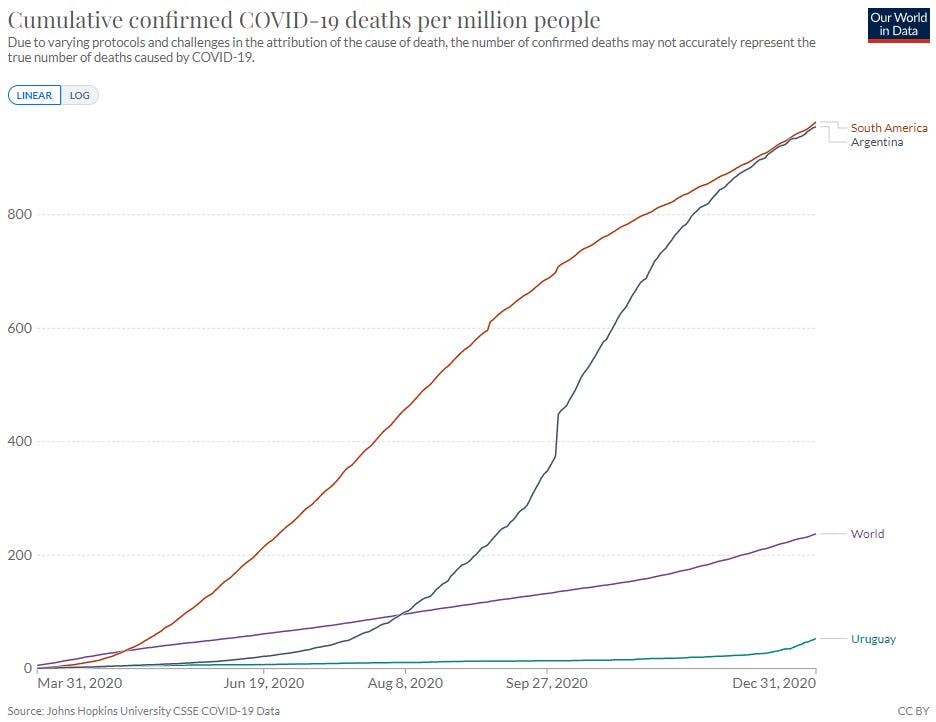



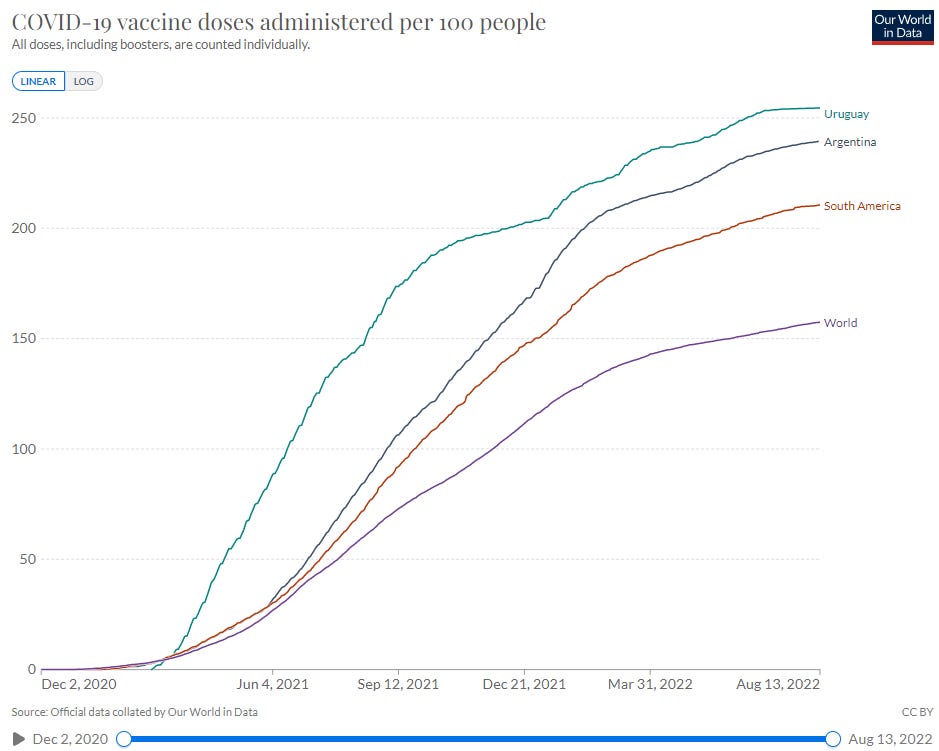
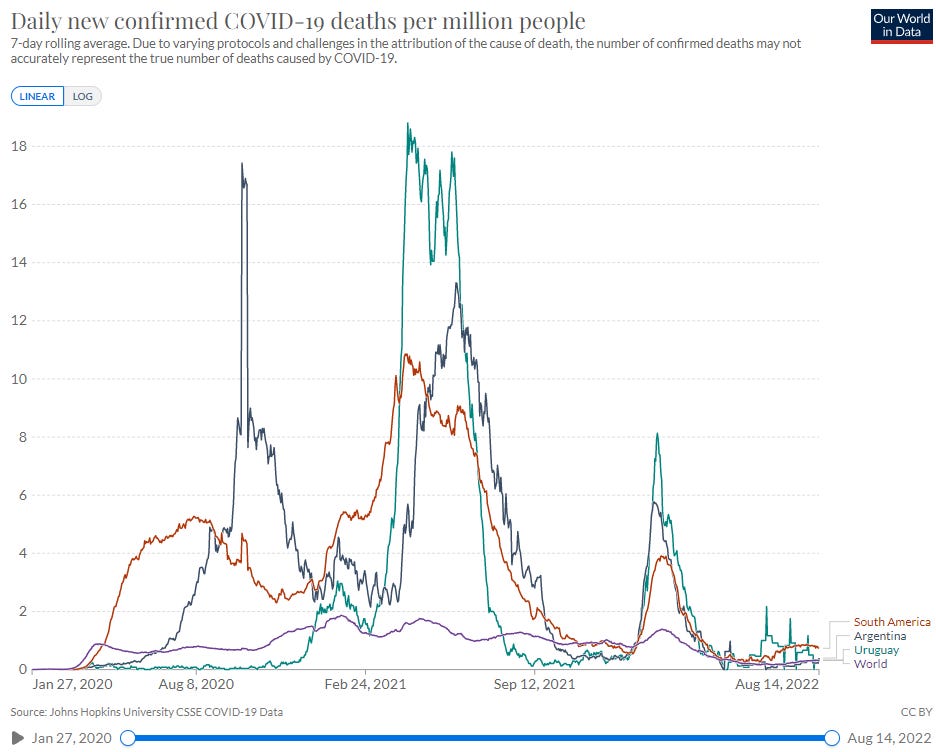

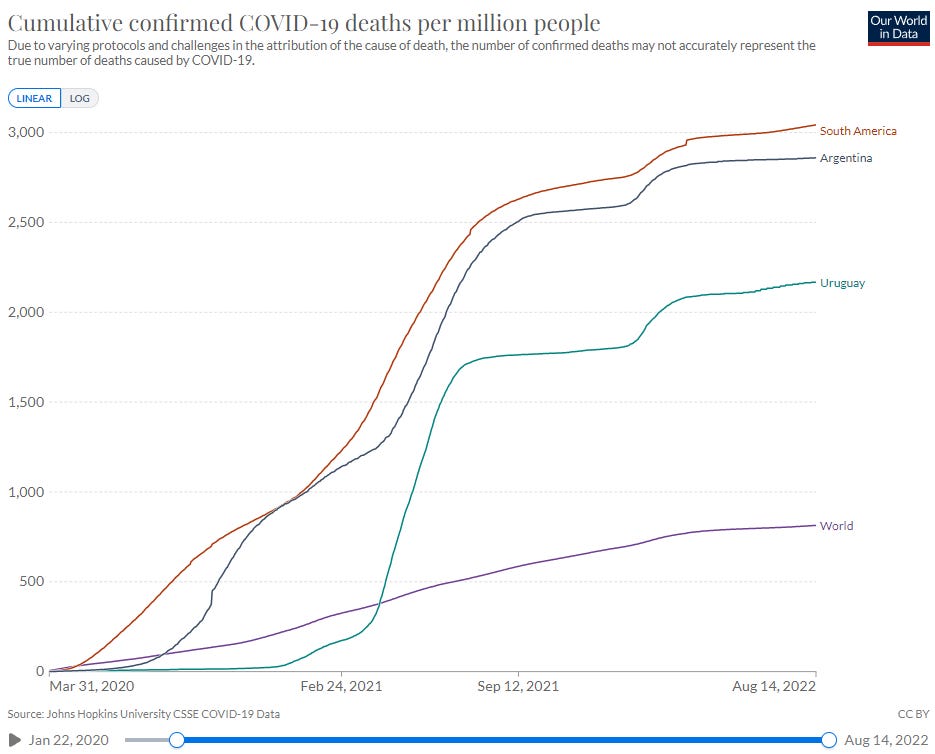


Very interesting. Did Juan Chamie make a mistake on the table, or am I missing something? There are two bars in red labeled as IVR 2021. The first is under the 2020 title.
I love these essays—you could publish them in a book or monograph, and even in parts like Alex Berenson did with his “Unreported Truths”. Thank you for this.